From the enchanting hues of naturally colored wild axolotls to the ethereal glow of GFP axolotls, there’s a captivating variety to choose from. Join me on an adventure through the 17 axolotl body pigmentations, ranging from the common to the incredibly rare. Delve into the genetic mechanisms behind these vibrant hues and the secrets of these charming aquatic companions.

During my research for this article, I was left amazed by the many different axolotl colors out there.
It turned out the various colorful morphs of this salamander are all possible thanks to years of selective breeding.
Although it seems axolotls are widely available, some types that are more difficult to breed can be very rare and particularly expensive.
Let me show you what axolotl colors I was able to find and maybe give you some ideas for your new pet.
17 Different Axolotl Body Pigmentations
After discovering the many different color variations of axolotls, I couldn’t help but dive deeper into how this was possible in the first place. With a little bit of research, I found that axolotls have 3 pigments in their genes that can produce numerous shades of colors:
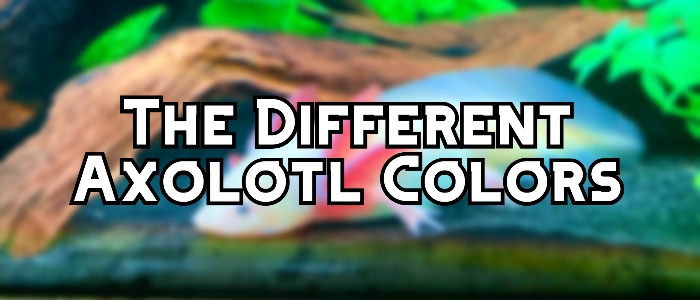
- The first pigment is melanophore. It produces shades of brown and black.
- The second pigment is xanthophore. This pigment produces shades of yellow, orange, or red.
- The third pigment is iridophore. Iridophore produces reflections of gold and silver.
To create rarer combinations, people have bred axolotls together to produce morphs with more unique colors and markings.
To better understand what type of axolotl you may want to add to your tank, I invite you to dive into my list of 17 enchanting axolotl hues, and you may just find your perfect match.
Keep in mind that axolotls are primarily solitary creatures. In case you want to add some residents that can cohabitate well, here is a list of fish that can become tank mates to your axolotl and can handle the colder temperatures that these salamanders require.
That being said, here are the different axolotl morphs and their respective colors:
1. Naturally Colored Wild Axolotls

- Availability: Common
- Price bracket: Affordable
- Average Adult Size: 6-18 inches
The naturally colored axolotl is probably one of the most common and cheapest options on this list.
The natural habitat of these amphibians is typically swampy areas and lakes that can effectively meet all of their needs.
With this in mind, it’s no surprise that wild axolotls have colors that would help them blend into their natural environments.
Most Wild axolotls have a dark green to gray body, smeared with some black and olive mottling so that they don’t stick out too much when targeted by predators.
They may also have spots of brown or gold depending on the specific patterns per axolotl.
It’s what a naturally-colored axolotl looks like.
They grow to weigh about 10.5 – 11 ounces, so ensure you place your pet in a tank wide enough for comfort.
Keep this mental image while scrolling further down this article…
For wild axolotl care, ensure their water stays within 61-64°F as axolotls need cooler water to live. pH level must not exceed 7.4-7.6, or else they may die.
2. Black Melanoid Axolotls
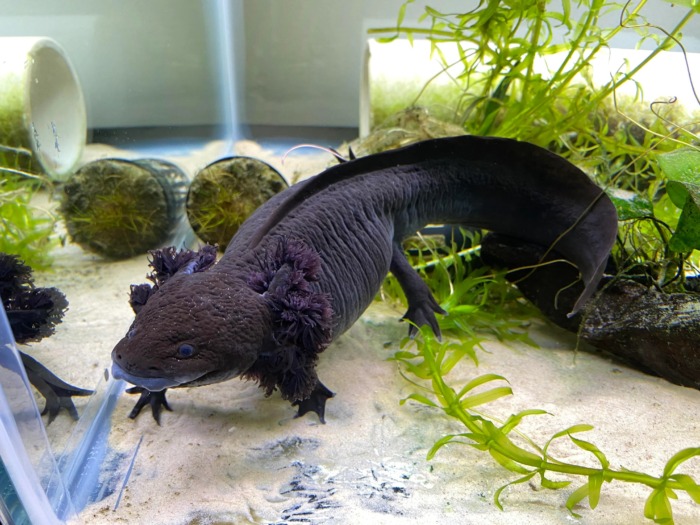
- Availability: Common
- Price bracket: Affordable
- Average Adult Size: 6-18 inches
To better understand the reason behind the name of these axolotls, it helps to understand what melanoid means.
Melanoid is a variation of the word melanin, which means something that contains a dark brown or black pigment. As you may have rightly guessed, this melanin is responsible for the dark pigmentation of Black Melanoid Axolotls.
With that in mind, the black melanoid axolotl is dark brown or black with little to no pattern.
While they may seem similar to the wild axolotl, you will see that the black melanoid axolotls will typically be darker with less distinctive qualities marking their bodies.
They are fairly common and easy to come across, so this is an affordable option for anyone looking to get an axolotl.
For Black Melanoid Axolotl care, feed them a diet of earthworms, pellets or bloodworms to keep them growing and healthy. They also need their tank lighting to mimic natural cycle, so get right on that.
Author’s note: As the number of melanophores increases, it causes a decrease in xanthophores, which in turn causes the iridophores to fall. This simply means that melanin in Black Melanoid Axolotls reduces the vibrancy of iridophores and xanthophores, thus creating a more uniform, dark appearance than Wild Type Axolotls.
3. GFP Axolotls – Green Fluorescent Protein
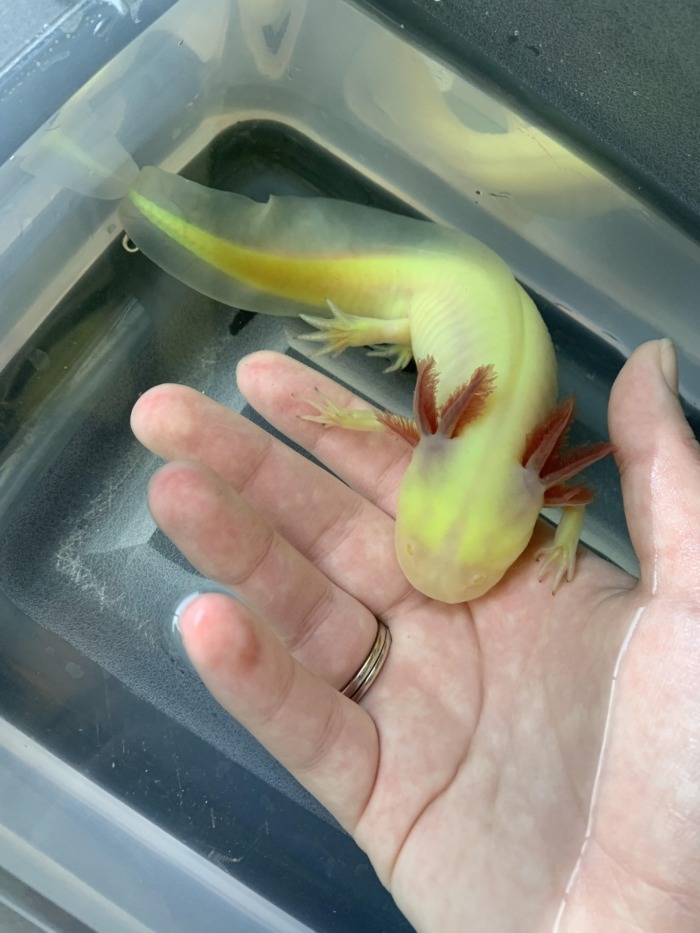
- Availability: Somewhat Rare
- Price bracket: Affordable
- Average Adult Size: 10-18 inches
The GFP or Green Fluorescent Protein axolotl is not a naturally bred amphibian.
It is man-made by adding a certain protein to an albino axolotl. GFP proteins are introduced to Axolotls by inserting genes from jellyfish or other naturally glowing organisms into the Axolotl’s DNA; this process is done using genetic engineering techniques. The ensuing result of this process is that the Axolotl will glow in the dark when put under specific lighting like UV light.
One really interesting feature of this specific axolotl is the fact that it can glow in the dark when put under specific lighting.
Just grab a black or UV light and shine it on GFP axolotls in a dark space to see them glow a striking green color.
To get a light that will allow you to see your axolotl glow while also helping to sterilize the tank, click here. Since the GFP varieties are made with direct human interference, they are somewhat rare to find, but not impossible.
GFP Axolotls are safer in freshwater due to their thin and overly sensitive skin, so include regular water changes in your GFP Axolotl care regimen and ensure the water parameters in the tank are properly maintained.
4. Leucistic Axolotls – “Lucy”
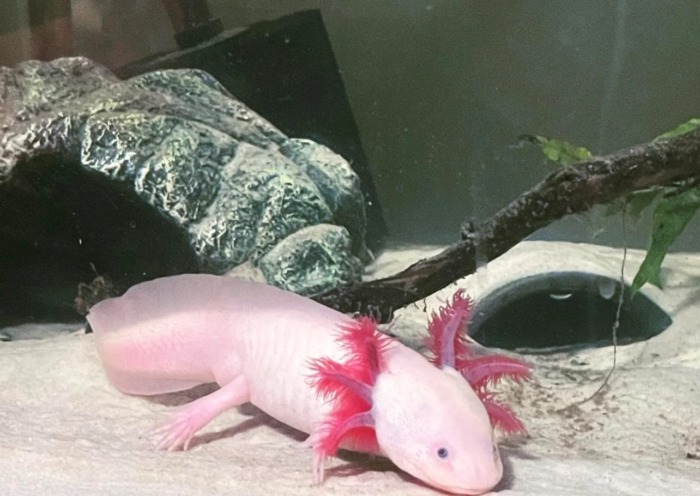
- Availability: Common
- Price bracket: Affordable
- Average Adult Size: 5-8 inches
The leucistic axolotl is a popular choice amongst axolotl enthusiasts for good reason.
They are unique in appearance and affordable as well, the perfect combination.
The typical “Lucy” axolotl is lightly colored with beautiful pink, feathery gills, and dark or blue-colored eyes.
Despite their unusual appearance, they are common and readily available for anyone looking to purchase one.
They are accurately given the name leucistic, which means they have less color in their skin, with regular or dark eye colors.
They may also have patterns of small dark spots across their face depending on the specific gene variations.
Leucistic Axolotls are carnivores; add meat-based diets such as earthworms and blood worms to their diet for optimum health. For Leucistic Axolotl care, keep their habitat calm with at least 75 liters of water per Axolotl.
5. Albino Axolotls
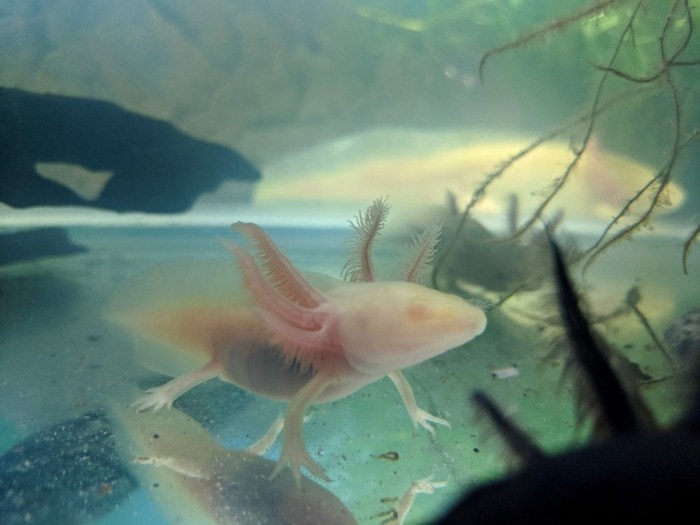
- Availability: Common
- Price bracket: Affordable
- Average Adult Size: 6-18 inches
Despite what I first believed, the albino axolotl is not actually a rare variation type and is quite common to come across in captivity.
Most people would think that this genetic condition is hard to find, and that would be true concerning ones born in the wild.
Albino means an absence of pigment in the skin, so albino axolotls born in the wild are typically targeted by predators that can easily spot them.
They will usually be white in appearance with pink gills and eyes as well. Due to their fragile body, it’s best to keep the temperature in their tank between 60-65°F. Floating bottles of ice water can help maintain cooler temperatures in warmer areas or during hot seasons; this aids the Albino Axolotl care.
They are also helpful in creating other types of axolotl variations, such as the GFP morph.
Author’s note: These species are light-sensitive Axolotls because they do not have eyelids, and it’s even worse for Albino Axolotls. Due to their lack of pigmentation, bright lights tend to hurt their eyes. They are accustomed to the dim light conditions of their natural habitat, so keep that in mind when setting up your axolotl tank. Ensure you provide them with shaded areas where they can retreat from light if needed.
If lighting must be used in the tank, we suggest using an LED light on a low setting.
6. Hypomelanistic Melanoid Axolotls
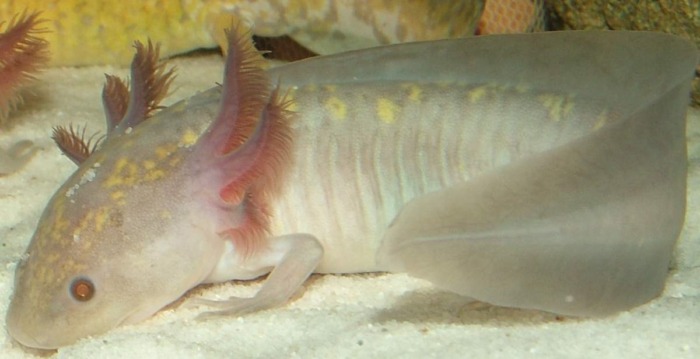
- Availability: Extremely rare
- Price bracket: Expensive in the hundreds
- Average Adult Size: 9-12 inches
This Hypomelanistic Melanoid axolotl is so rare that there is not a lot of information describing them, so although they are cool to learn about, they might be a little hard to own.
The term hypomelanistic means the lack of dark pigment, which is different from albino which means lacking all pigment.
Hypomelanism in Hypomelanistic melanoids is a genetic trait that reduces melanin and is responsible for their lighter appearance compared to standard melanoids. They’re one of the newest morphs and are usually brighter in color, resulting in a gray-purple coloration.
The Hypomelanistic Melanoid axolotl is extremely rare and hard to come by.
It’s then no surprise that you will have to pay a good amount of money to obtain one.
Their unique qualities are what make them so hard to find.
The Hypomelanistic Melanoid axolotls are lightly colored and transparent with some gold color variations on their heads.
Also, they have been said to have three recessive genes simultaneously, and each hypomelanistic melanoid axolotl differs from the next.
Hypomelanistic Melanoid Axolotl care is no different from typical Axolotl morphs. Keep a neutral pH level of 6.5 -7.5 and a gentle filter to keep their water clean.
7. Copper Axolotls
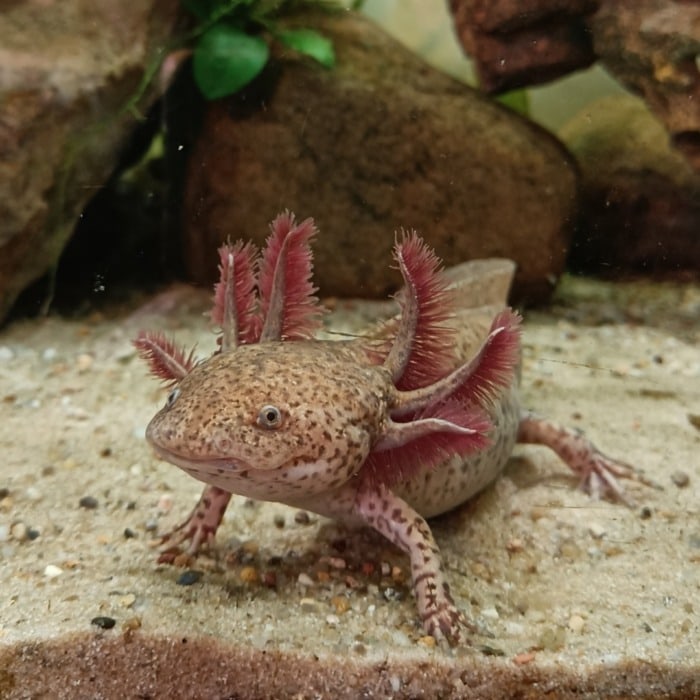
- Availability: Rare
- Price bracket: Affordable in the hundred range
- Average Adult Size: 10-12 inches
The bronze-colored axolotl has a light grey color to their body with copper specks, grey eyes, and grey or red-colored gills.
These are not the most common axolotls to come across because of their recessive genes, but they are not the rarest either.
You are not as likely to find one of these at a store if you look, but they are not impossible to find if you can locate the right breeder.
The xanthophore pigment can be found in this axolotl based on the appearance of the copper tones located across their bodies. Xanthophores are cells with carotenoids, which are pigments absorbed from diets. The xanthophores are responsible for producing the bright red and yellow hues you see in the morph.
One of the two axolotls being bred to achieve this look has to contain the gene.
Two aspects are essential when it comes to Copper Axolotl care. The first is to keep temperatures below 70℃; a range between 60-65℃ is appropriate. The second is to keep a low water flow that is not fixed in any direct area and maintain optimum water parameters.
8. Golden Albino Axolotls

- Availability: Common
- Price bracket: Affordable in the hundreds
- Average Adult Size: 6-18 inches
Like their albino counterparts, the Golden Albino axolotl is fairly common to find, but they are slightly more expensive when comparing the prices of the two.
The yellow axolotl also lacks most pigment, but they have a yellow hue across their body that gives them a stunning golden appearance with pink gills and eyes as well.
Like other albino morphs, the Golden Albino Axololts are very sensitive to bright light due to their lack of pigmentation and require a dim or shaded environment to prevent stress and keep them active. This is a very important aspect of Golden Albino Axolotl care.
Remember not to keep them with fish as they can tug at Axolotl gills, or your axolotl may turn them into snacks. Do not mix young axolotl with each other – these gilled animals are not social creatures.
These color varieties are easier to replicate than others, which is why they are not uncommon.
However, their slight golden color makes them slightly more valuable when it comes to buying one.
9. Speckled Leucistic Axolotl
Speckled Leucistic Axolotl in a bare tank
- Availability: Common
- Price Bracket: Affordable
- Average Adult Size: 10-18 inches
Although similar to regular Leucistic Axolotls, the Speckled Leucistic Axolotl is a variation of the mutation. They’re known for their dark speckles ranging from dark green to brown; the specks are mostly dominant on their head, with a few scattered across their body.
The speckles, being the highlight of their physical features, contrast beautifully against their pale white or pink bodies and add an enchanting visual appeal compared to standard Leucistic morphs.
These axolotls are relatively easy to find and quite affordable; however, Speckled Leucistic Axolotl care is important to keep them sharp and active.
10. Harlequin Axolotls
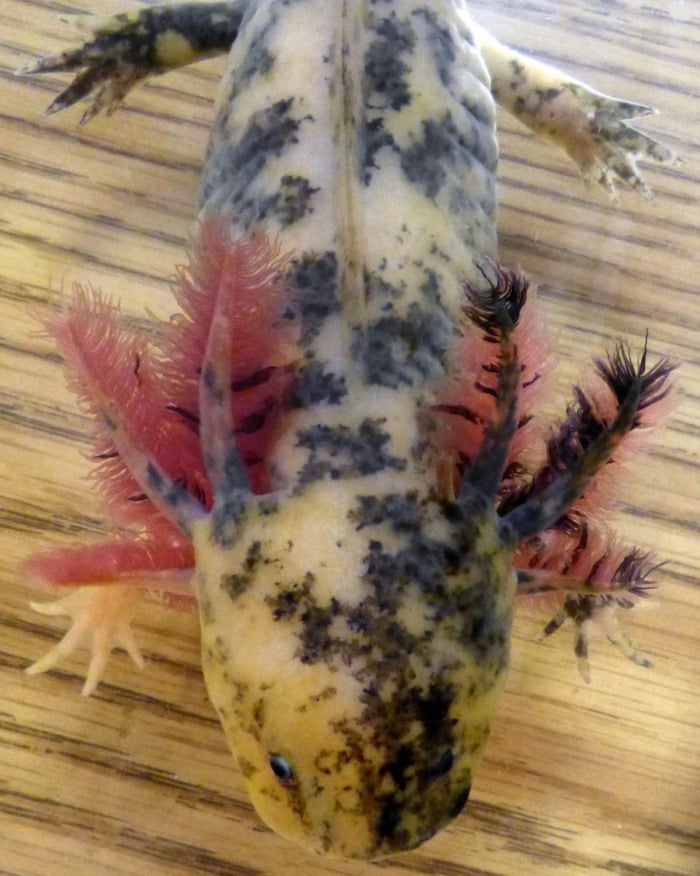
- Availability: Rare
- Price bracket: Expensive in the hundreds
- Average Adult Size: 6-18 inches
The “Harlequin” type of axolotl is another rare one with very little information on the specifics about them, but they are still really interesting to learn about.
The Harlequin axolotl is likely a mixture of Piebald and Leucistic axolotls, which gives the Harlequin lightly colored skin with some splashes of darker pigment across their face and body.
Harlequin means containing various color variations or having a masked appearance.
This makes sense when considering the splashes of pigment on the axolotl’s face.
Harlequin axolotls are difficult to find, so if you do happen to see one when looking around, you may want to bring it home with you.
You should also be prepared to pay a decent amount if you do buy one. For Harlequin Axolotl care, maintaining excellent water quality is the most crucial component. Do not let the temperature in the tank exceed a maximum of 70℃ as anything higher can cause heat stress, appetite loss, or even death.
11. Piebald Axolotls
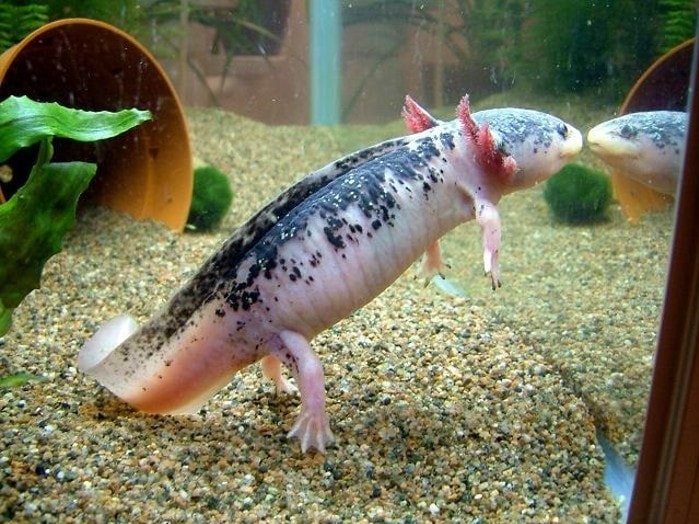
- Availability: Rare
- Price bracket: Expensive in the hundreds
- Average Adult Size: 6-18 inches
When considering this next axolotl, understanding the meaning of its name helps to better explain its appearance.
Piebald means to have irregular patches or spots that typically are black and white. The Piebald axolotl is white with large dark patches across its body and dark eyes with red gills as well.
You’ll notice that the patches on Piebald Axolotl become progressively darker as they age, which adds to their already interesting visual appeal. Keep in mind that your axolotl will change as it ages.
It is not easy to get an axolotl with lighter skin and splotches of dark pigment, so these black-and-white Axolotl are thought to be quite rare.
Piebald Axolotl care: These pets love to jump like every other species; make sure the tank has a secure lid or fill the tank a couple of inches short. Adults can be fed 2-4 times per week, and growing Axolotls 1-2 times per day.
12. Chimera Axolotls

- Availability: “Unicorn” status rare
- Price bracket: Expensive in the thousands / Not for sale
- Average Adult Size: 6-18 inches
The Chimera axolotl color is one of, if not, the rarest axolotl morphs in the world. Their coloration is an almost perfect split between the albino and the melanoid axolotls.
If they have been bred effectively, they will be split down the middle with one side being darker and the other lighter.
What you get is a Chimera Axolotl, with one half of the body being a melanoid morph and the other being an albino morph.
This split-color axolotl gene combination is so hard to achieve that it is often not sold in most stores due to its difficulty in production.
Maintaining cool, pristine water conditions is an essential aspect of Chimera Axolotl care. A 15-gallon tank to 1 axolotl ratio is perfect to aid active movement and growth.
13. Firefly Axolotls
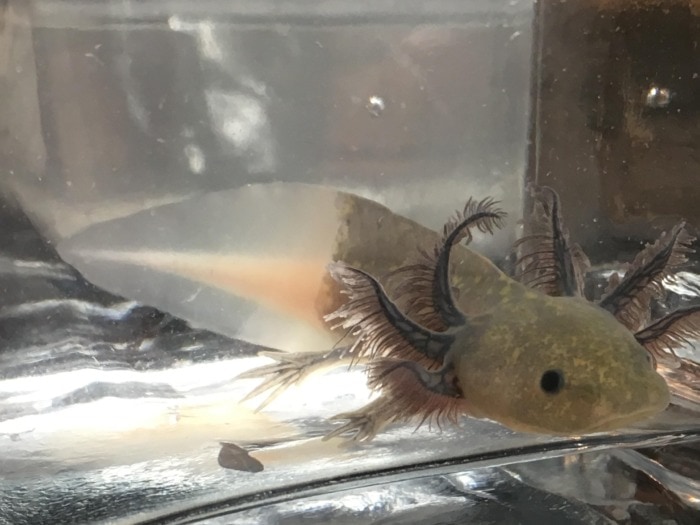
- Availability: Rare
- Price bracket: Expensive in the hundreds
- Average Adult Size: 6-18 inches
The Firefly axolotl morph is rare in more ways than one.
First, these glowing tail axolotl are not naturally produced – the cool variations and features are artificially created by humans.
The Firefly axolotl is said to have a dark body with a light-colored tail that is made with the same protein as the GFP axolotl, thus making it glow in the same way that a firefly would. This GFP is directly introduced into the tail, which explains why only the tail would glow, while the rest of the body remains dark.
Their rare status and atypical appearance make this axolotl a bit pricier, but they are worth it if you want both looks and entertainment.
Regular water changes and steady water temperature are the two most important aspect of Firefly Axolotl care. You definitely want to keep that glow around for a long time.
14. Lavender Purple Axolotls
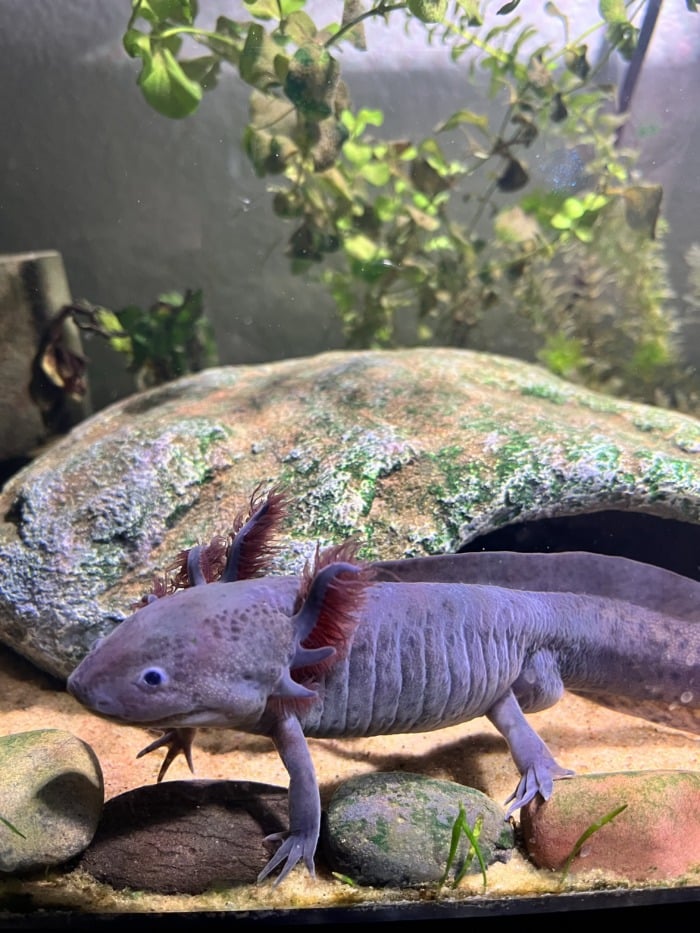
- Availability: Rare
- Price bracket: Affordable in the hundreds
- Average Adult Size: 6-18 inches
The last and final axolotl color morph on this list is the Lavender-purple one.
It should come as no surprise that the color palette of this salamander is a light purple-silver color with dark eyes and greyish-red gills. They also have black and brown spots on them, giving them the appearance of freckles or a Dalmatian.
Lavender Axolotls are sometimes called “Silver Dalmatians” due to these spotted patterns. This should help you identify them just in case a vendor decides to use the term interchangeably.
They have only been bred successfully a few times, which is why this pastel-colored axolotl is considered to be very rare.
So if you can manage to find a lavender-purple morph to get your hands on, I would suggest buying one before someone else beats you to it.
Lavender Axolotl care: They are most comfortable if kept in cooler water between 60-60°F as higher temperatures can lead to the development of disease and stress.
15. RLG (Really Long Gills) Axolotl
A RLG Axolotl swimming in a tank showcasing its extremely long gills
- Available: Rare
- Price Bracket: A bit pricey
- Average Adult Size: 9-12 inches
The RLG Axolotls’s exceptionally long gills can grow up to two inches long, making them visually distinctive and highly sought after among aquarium hobbyists.
An adult RLG Axolotl typically reaches about 9-12 inches in length. Feeding patterns and habitat conditions influence its growth rate.
Long-gilled Axolotl color pattern largely depends on the base morph, but they remain renowned for their long gills. RLG is definitely one of the most unique Axolotl morphs.
RLG Axolotl care involves proper habitat maintenance, regular feeding, and close monitoring to keep their gills healthy and active. They can be messy, so it’s important to maintain proper water parameters.
16. Mosaic Axolotl
A Mosaic Axolotl in an aquarium highlighting its unique multicolored appearance
- Availability: Very rare
- Price Bracket: Not sold
Their extremely rare status is due to the fusion of two different-colored eggs, which helped create a multicolored appearance that blends wild-type and leucistic traits.
You never know what to expect with the unpredictable color patterns on the multicolored Axolotl; they do not come in a particular pattern, so don’t expect that. As adults, they grow to reach 9-12 inches.
Their unique physical traits have contributed to their super rare status on the market, and if you can get your hands on one, you are in sheer luck.
For Mosaic Axolotl care, keeping them in a bare bottom tank is best for quickly locating their food. They may also consume a bit of gravel when eating, so make sure the sand in their tank maintains a fine texture.
17. Axanthic Axolotl
An Axanthic Axolotl in its glory
- Availability: Rare
- Price Bracket: Expensive
The gray-colored Axolotl’s lack of yellow pigmentation gives them a very unique coloration responsible for its muted, bluish appearance in tanks.
The absence of xanthophore pigment responsible for producing yellow, red, and orange pigment in the Axolotl gives them unique coloration.
If you’re on the minimalist side of things and can’t stand yellow’s brightness, you should collect this gem for your viewing pleasure. Prioritize water cleaning and temperature maintenance as part of Axanthic Axolotl care.
Axolotl color morphs that don’t exist but you’ve probably seen pictures of
These cute little salamanders have recently gained more recognition due to being included in a popular world-building game, so it’s no surprise that we are seeing a few variations of axolotl that don’t really exist. On the other hand, some Photoshop enthusiasts just seek the shock value and want to go viral.
Here are the axolotl color morphs that don’t exist in real life:
1. Blue axolotls
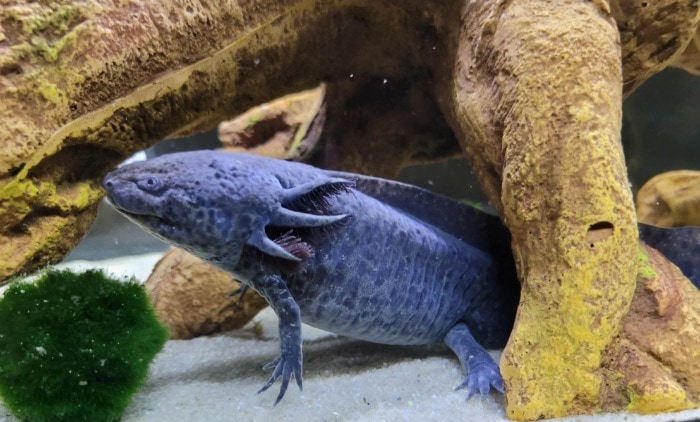
As cool as it would be, the blue axolotl does not exist.
If you’ve seen photos of one it was either deceitful lighting, CGI, or paint dying.
2. “Green” axolotls (probably a mislabel of GFP)
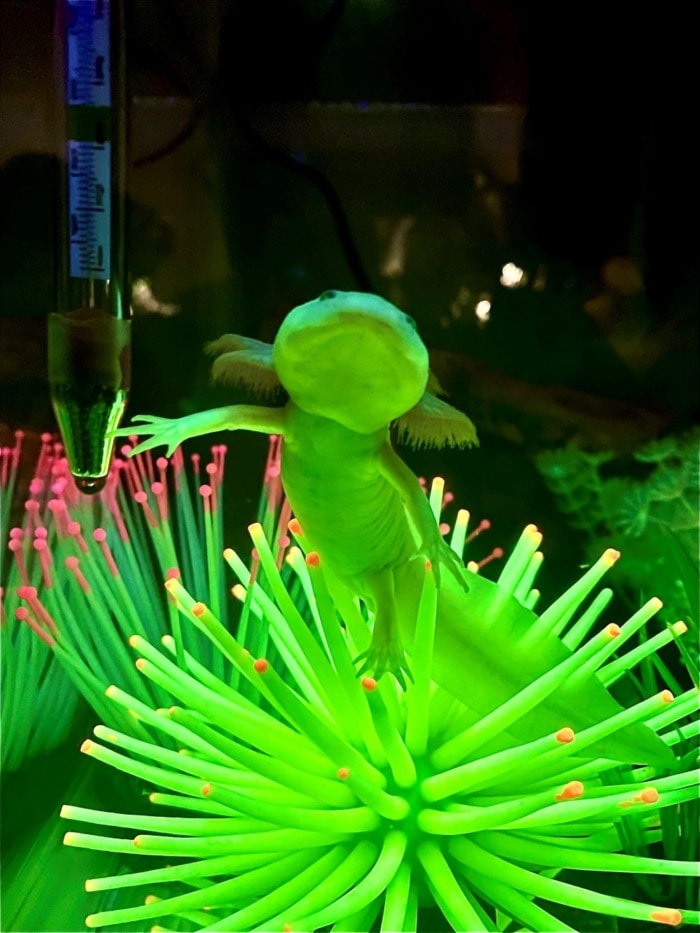
“Green” axolotls aren’t actually real, but either dyed or created online.
3. Any other manually dyed axolotls

Axolotls can be injected with dyes to create new temporary colors that aren’t naturally occurring.
However, there have been discussions on how this is not a healthy practice for the animals, so avoid purchasing one with a color combination you’ve never heard of.
My Takeaway
Overall, this cute amphibian is a great pet for anyone willing to put in the time and effort to raise it, so remember to do research and have fun picking the one that’s right for you. For more information on axolotls and how not to mistake them for something else, visit this article.

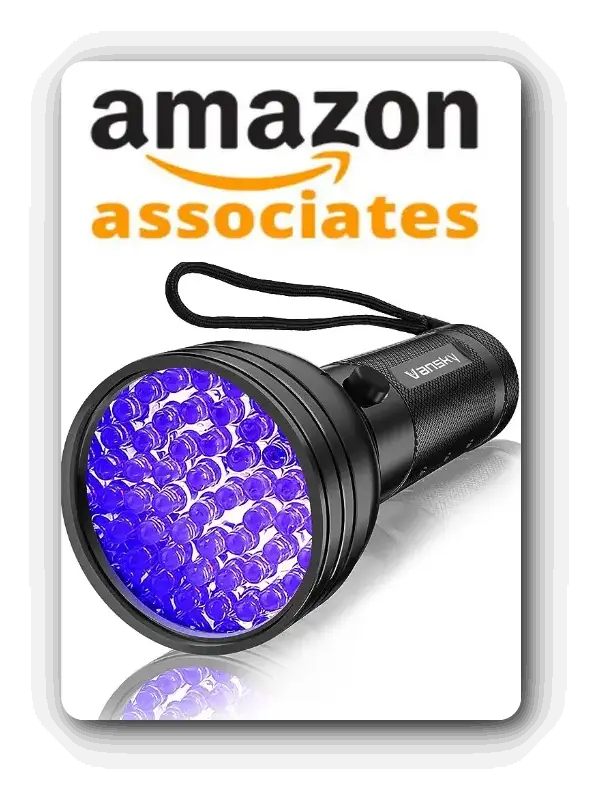

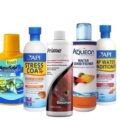

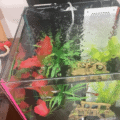
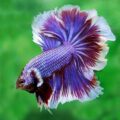

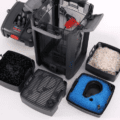
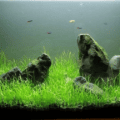


1 thought on “17 Different Axolotl Colors and Their Morphs”